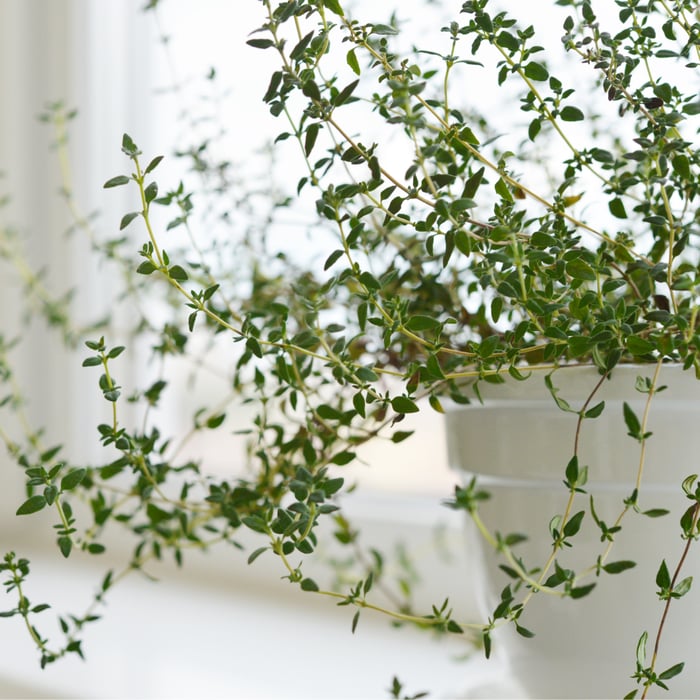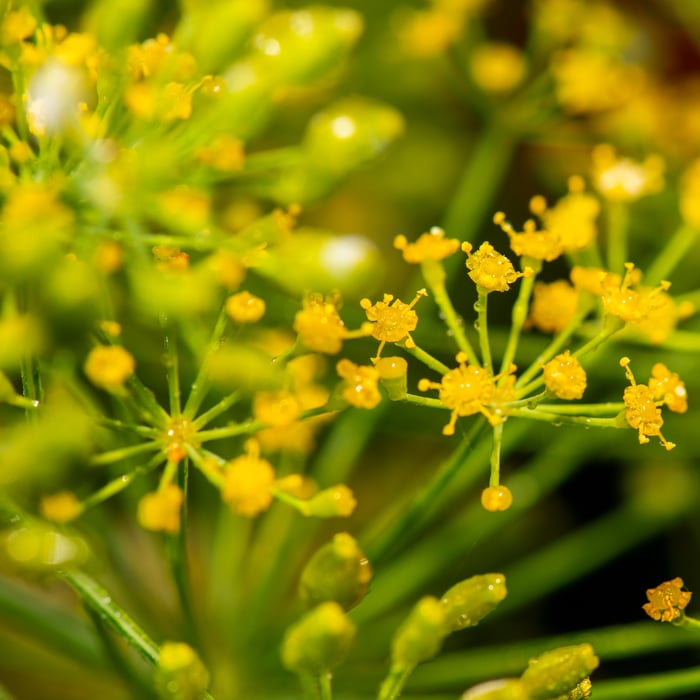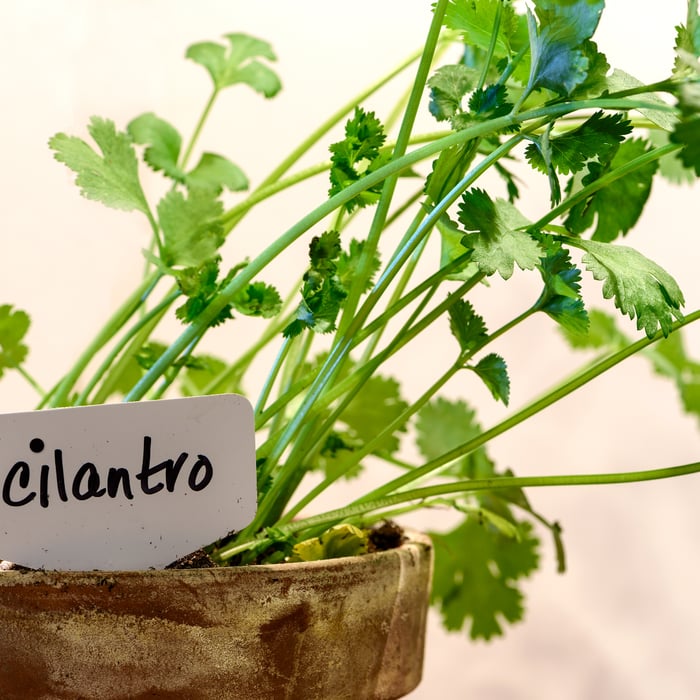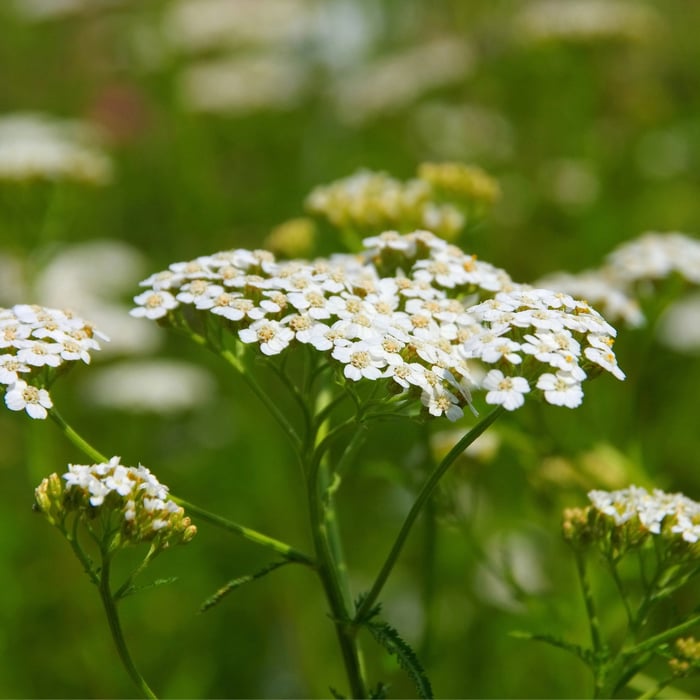Growing thyme indoors can be a fun and rewarding experience for any home gardener. Thyme is a versatile herb that can be used in many recipes, including stews, soups, and sauces. It is also a drought-resistant plant that requires little maintenance, making it perfect for those who are new to gardening or who have a busy lifestyle. Here are some tips on how to grow thyme indoors successfully.
Choosing the Right Pot and Soil
When growing thyme indoors, it's important to choose the right pot and soil. Thyme prefers well-drained soil, so a clay pot with good drainage is a good choice. The pot should be at least 6 inches in diameter, to allow the roots to spread out. Use a high-quality potting mix that is specifically designed for herbs, and make sure it has good drainage properties. Avoid using garden soil, which can be too heavy and may not drain well.
Starting Thyme from Seeds
If you want to start thyme from seeds, plant the seeds in the potting mix and keep the soil moist until they germinate. Thyme seeds can take up to 14 days to germinate, so be patient. Once the seedlings have emerged, wait until they are about 2 inches tall before transplanting them to a larger pot.
Choosing Heirloom Thyme
If you want to grow heirloom thyme, it's best to purchase a small plant from a reputable nursery. Heirloom thyme is a type of thyme that has been grown for generations and has been selected for its flavor and aroma. Some popular heirloom varieties of thyme include English, French, and lemon thyme.
Popular Herb Seeds for Planting | 35 Variety Pack
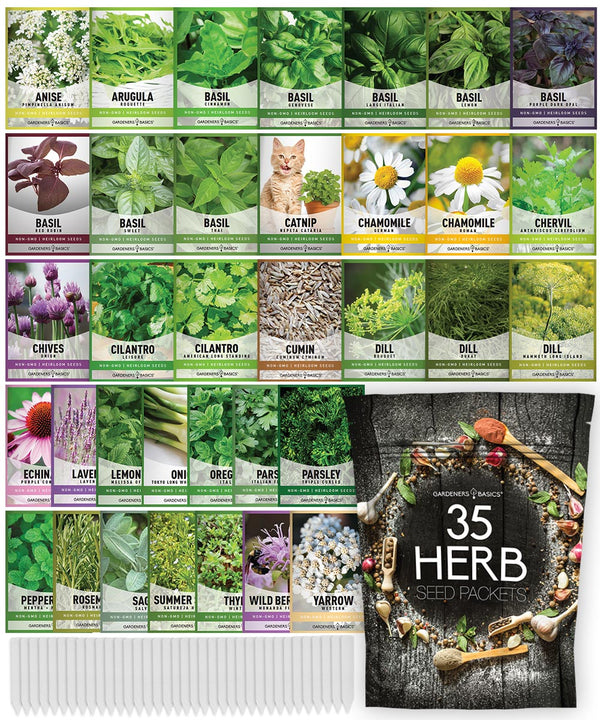
$29.95
$49.95
Heirloom, non-GMO herb seeds for indoor and outdoor home gardens! Introducing our 35 Herb Seeds Variety Pack, the ultimate selection for any herb garden enthusiast! This premium assortment includes heirloom herb seeds that are non-hybrid, open-pollinated, and non-GMO, ensuring you get only… read more
Providing Full Sun
Thyme needs at least 6 hours of full sun per day to grow properly. If you don't have a south-facing window that receives full sun, consider using grow lights to supplement the light. Place the plants near a window that receives bright, indirect light, or use fluorescent grow lights that mimic natural sunlight. Make sure to keep the lights on for at least 12 hours a day, and adjust the height of the lights as the plants grow.
Watering and Drainage
Thyme is a drought-resistant plant that prefers to dry out between watering. Water your thyme when the soil is completely dry. Overwatering can cause root rot, so be careful not to let the soil become waterlogged. When you water, make sure the pot has good drainage, so that excess water can flow out of the bottom. Avoid letting the plant sit in standing water, as this can also lead to root rot.
Indirect Light
While thyme needs full sun, it's important to avoid direct sunlight, which can cause the plant to dry out and wilt. Indirect light is best for thyme, so if your window receives direct sunlight, consider using a sheer curtain to diffuse the light. Alternatively, you can place the plant a few feet away from the window, so that it receives bright, indirect light.
Pruning Woody Stems
Thyme has woody stems that can become tough and unappetizing if left to grow unchecked. Prune the stems back regularly to encourage new growth and keep the plant looking tidy. Use a pair of sharp scissors or pruning shears to snip off the top 1/3 of the stems. This will promote bushy growth and prevent the plant from becoming too leggy.
Harvesting Thyme
Thyme can be harvested throughout the growing season, but it's best to wait until the plant is at least 6 inches tall before harvesting. To harvest, simply snip off a few stems at a time, leaving at least two-thirds of the plant intact. Thyme can be harvested fresh or dried for later use. To dry thyme, simply hang the stems upside down in a cool, dry place for several days. Once the leaves are dry, remove them from the stems and store them in an airtight container.
Propagating Thyme
Thyme is easy to propagate, making it a great herb to share with friends and family. Simply take a cutting from the plant and root it in a small pot of well-drained soil. Keep the soil moist until the cutting has rooted, and then transplant it to a larger pot. To take a cutting, use a pair of sharp scissors or pruning shears to snip off a 4- to 6-inch stem from the parent plant. Remove the leaves from the bottom inch of the stem and dip the cut end in the rooting hormone. Place the cutting in a pot of moist potting mix and cover it with a plastic bag to retain moisture. Once the cutting has rooted (in about two weeks), remove the plastic bag and transplant the new plant to a larger pot.
Growing Season
Thyme is a perennial plant that can grow indoors year-round. However, it may enter a dormant phase during the winter months, when the days are shorter and the light is less intense. During this time, reduce watering and fertilizing, and allow the soil to dry out slightly between waterings. In the spring, when new growth appears, resume regular watering and fertilizing.
Plants Indoor
Growing thyme indoors has several benefits. It allows you to enjoy fresh herbs year-round, even if you live in a climate with harsh winters. That's great for the cooking enthusiast who wants to cook with fresh thyme year-round too! It also allows you to control the growing conditions, so you can ensure that your plants receive the right amount of light, water, and nutrients. Additionally, indoor plants can help purify the air and reduce stress levels.
Herb Seed Assortment | 15 Variety Pack
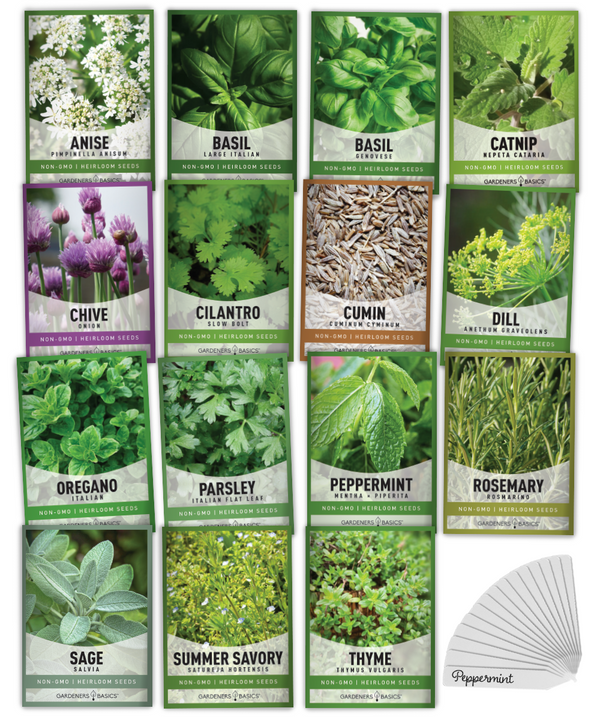
$19.95
Unlock the Power of Homegrown Herbs: 15 Heirloom Herb Seeds for Sustainable Gardening Introducing our 15 Herb Seeds Variety Pack—the ultimate collection for any home gardener, herbalist, or culinary enthusiast looking to grow fresh, flavorful herbs. Each of the 15 herb… read more
Final Thoughts
Growing thyme indoors is a fun and rewarding hobby that can provide you with a steady supply of fresh herbs. Learning how to grow thyme indoors isn't hard. With the right pot, soil, and lighting, thyme can thrive indoors and add flavor and aroma to your favorite dishes. Remember to provide good drainage, avoid overwatering, and prune the plant regularly to keep it looking its best. With a little patience and care, you can enjoy the benefits of growing thyme indoors for years to come.
Thanks for stopping by, please be sure to visit our online store where we have thyme seeds and all the herbs you could want to plant.
FAQ
Q: Can thyme grow in low-light conditions?
A: Thyme needs at least six hours of full sun per day to grow properly. However, if you don't have a south-facing window that receives full sun, you can use grow lights to supplement the light.
Q: How often should I water my thyme plant?
A: Thyme is a drought-resistant plant that prefers to dry out between watering. Water your thyme when the soil is completely dry. Overwatering can cause root rot, so be careful not to let the soil become waterlogged.
Q: How often should I fertilize my thyme plant?
A: Thyme doesn't need a lot of fertilizer, but you can fertilize it once a month during the growing season with a balanced, water-soluble fertilizer. Be sure to follow the instructions on the fertilizer package, and don't over-fertilize, as this can lead to poor growth.
Q: Can I use regular garden soil to grow thyme?
A: No, you should use a high-quality potting mix that is specifically designed for herbs. Garden soil can be too heavy and may not drain well, which can cause root rot.
Q: How can I prevent my thyme plant from getting leggy?
A: Thyme has woody stems that can become tough and unappetizing if left to grow unchecked. To prevent your thyme plant from becoming leggy, prune the stems back regularly to encourage new growth. Use a pair of sharp scissors or pruning shears to snip off the top 1/3 of the stems.
Q: How do I know when to harvest my thyme plant?
A: Thyme can be harvested throughout the growing season, but it's best to wait until the plant is at least 6 inches tall before harvesting. To harvest, simply snip off a few stems at a time, leaving at least two-thirds of the plant intact.
Q: Can I use fresh thyme leaves in my cooking?
A: Yes, fresh thyme leaves are a great addition to many recipes, including stews, soups, and sauces. Simply snip off a few stems of thyme and remove the leaves from the stems. Rinse the leaves, chop them finely, and add them to your recipe.
Q: Can I propagate thyme from cuttings?
A: Yes, thyme is easy to propagate from cuttings. Simply take a cutting from the parent plant, root it in a small pot of well-drained soil, and keep the soil moist until the cutting has rooted. Then transplant the new plant to a larger pot.



